Success is not a destination, it’s a journey, and sometimes, all it takes is one more step to reach your end goal.
After being together in League Two during the 2017/18 season, Coventry City and Luton Town are one step away from reaching the Premier League.
The Sky Blues coach Mark Robins called it a ‘game for the romantics’. “People talk about journeys, where we’ve come from,” Robins told the BBC.
Coventry outlasted Middlesbrough to join Luton, who beat Sunderland and at Wembley on 27th May, the EFL Championship playoff final — the richest game in football — will be held, to see the final qualifier for the Premier League alongside Burnley and Sheffield United.
This tactical analysis preview will be an analysis of the tactics that may be employed by both teams in the final game who have a clear English identity in their style of play, considering the fact that the previous two matches between them ended in a draw, leaving the outcome completely undecided.
Coventry City
This season, Coventry City has made a remarkable comeback after finishing in 12th place last year. The team, with Mark Robins in his second era, has displayed great strength and determination, ultimately securing a fifth-place finish and qualifying for the playoff final.
The 53-year-old has shown a preference for utilising a back three formation, as depicted in the graphic below, using 3-4-1-2 for around 41% and 3-4-2-1 for 14% of the games. The wingback formations provide width, and a defensive solidity (the existence of three centre-backs) while maintaining a central presence up front.

His team’s style appears energetic and mixes between direct, vertical play and a possession approach, with a focus on attacking in a straight line rather than relying on recirculation. As per FBref, Burnley lead the league possession rate with 64%, while the Sky Blues own 46.9%.
Coventry maintain a 3-2-4-1 structure in possession, utilising a 3-2 base, a box-midfield and stretching the width of the pitch by the wingbacks while their striker, Viktor Gyökeres, pins the opposition’s defensive line. The 3-2-4-1 gives them a static positional spread, making the vertical play easier.

Both attacking midfielders roam higher on the half-spaces. One of them is ready to receive the lay-offs from the striker, following a direct progressive pass from one of the centre-backs, and the other number ’10’ joins the last line. With his physical presence and ability to receive and shield the ball, Gyökeres is considered a focal vertical point.


Additionally, sometimes one of the box-midfield has the room to drift wider to receive there, while the wingback advances forward to pin the opposition’s fullback higher…


The wingback also makes a sudden run behind the opposition’s defensive line while the reverse wingback attacks the blindside.

The Sky Blues opt for long goal kicks, as is highlighted in the below graphic, rather than short build-up play, maintaining a mentality focused on targeting their striker, with an emphasis on winning second balls or creating opportunities for runs in behind.

In their semi-final second leg match for this final, the goalkeeper Ben Wilson plays long towards Viktor Gyökeres who drew Darragh Lenihan high to contest the ball with him while Gustavo Hamer and Jamie Allen are attacking the space, and the duo Ben Sheaf and Liam Kelly in the second wave are ready to win the second ball.

The layoff landed for Gustavo Hamer who passed it in the pocket for Allen.

Giles cleared it brilliantly before the latter could get a shot away.

Gustavo Hamer has undoubtedly been one of the standout players this season, showcasing exceptional skills and making a significant impact with a total of 20 contributions, comprising 9 goals and 11 assists.
He leads the team in progressive passes with an impressive tally of 279 which means he advances the ball in a forward direction. Also, Hamer’s agility and determination are evident with his 152 penetrating carries, as the below graphic shows.

In their 2-1 win against Reading. Kelly played a progressive pass in between the lines for the well-positioned Hamer…
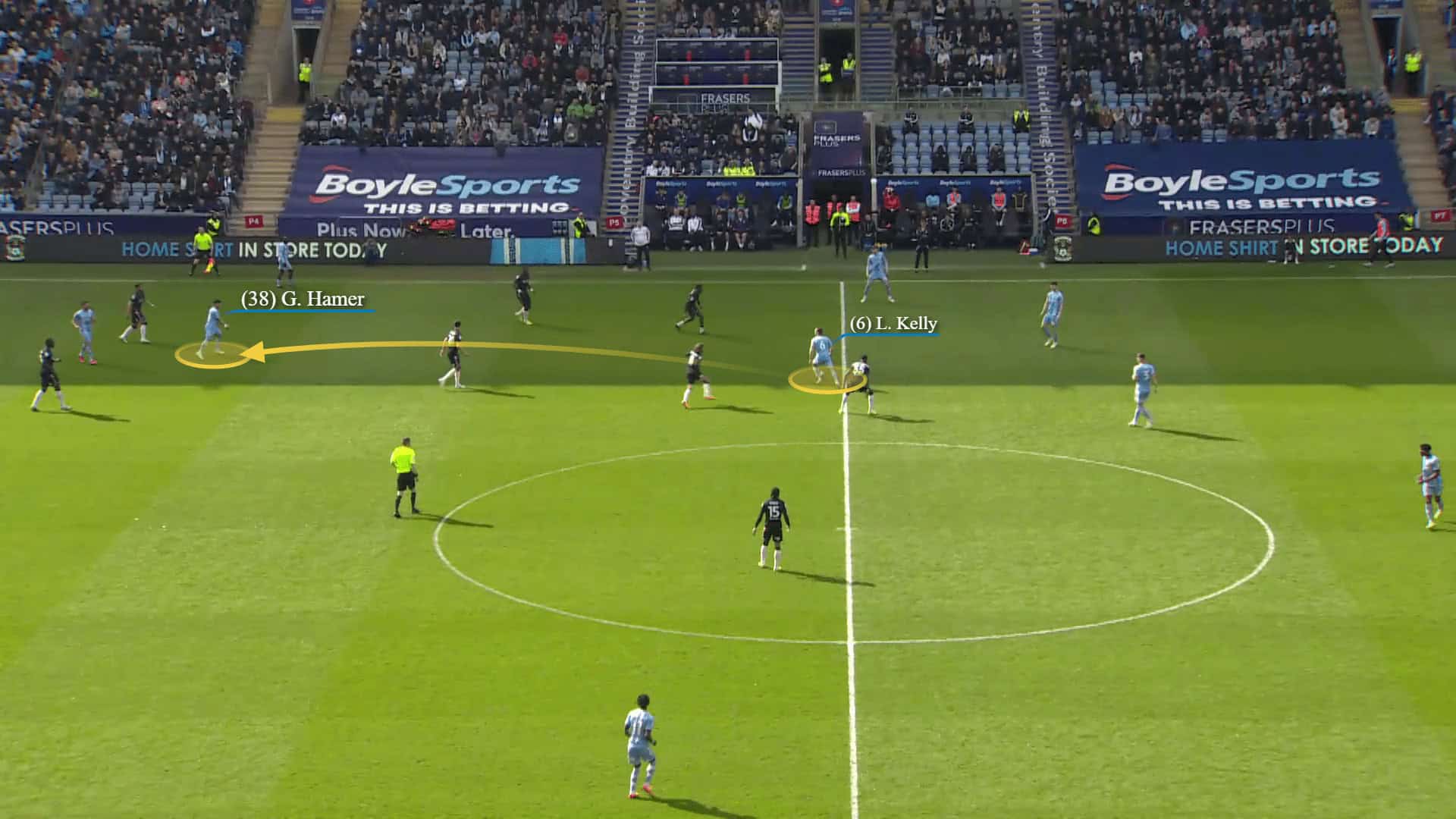
…who broke through while Godden and Gyökeres ran in opposite directions to open up a gap between both Reading’s centre-backs.
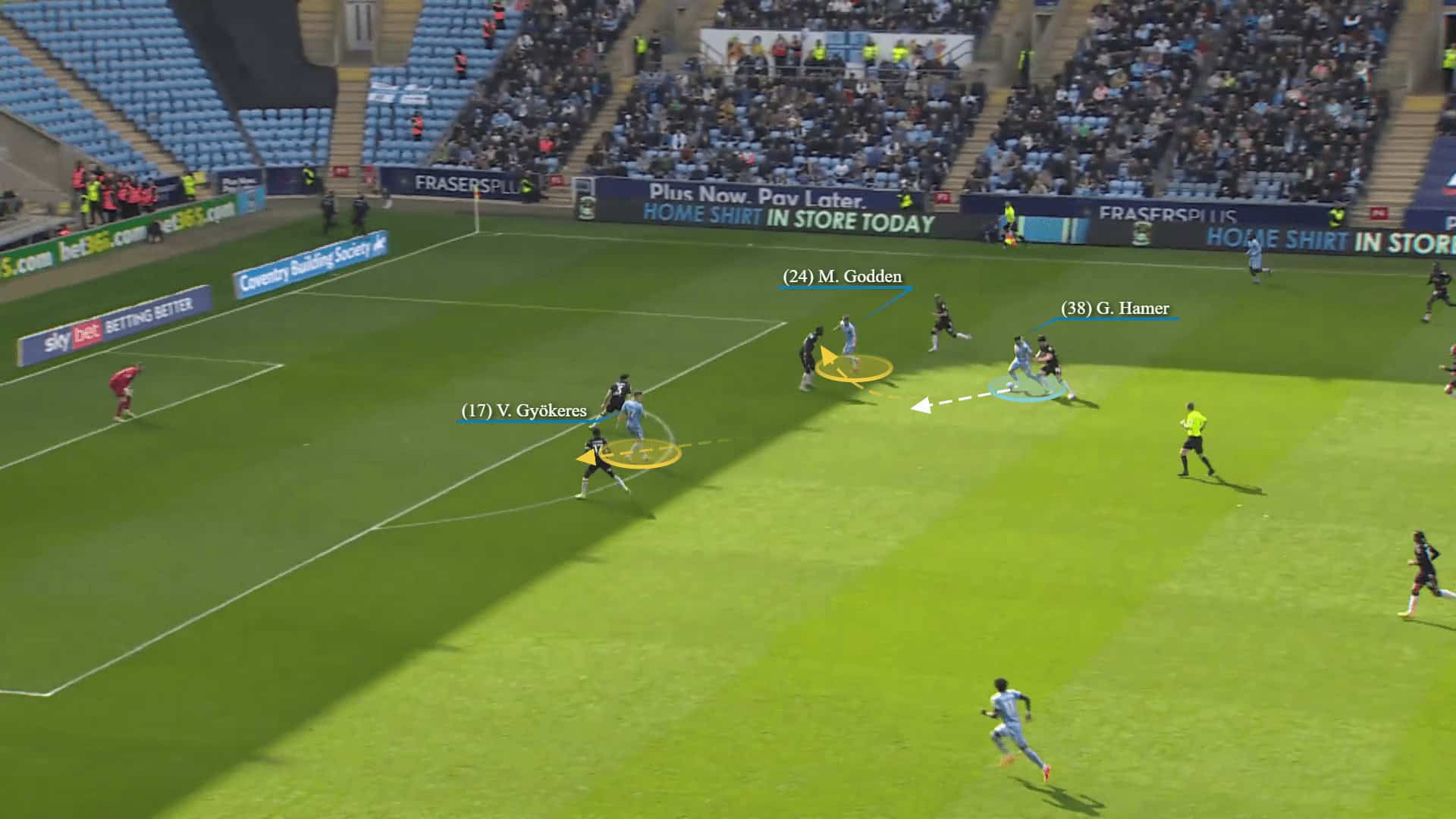
Then Hamer tried to pass in behind, but the ball returned to him. He curved it brilliantly, scoring a goal.
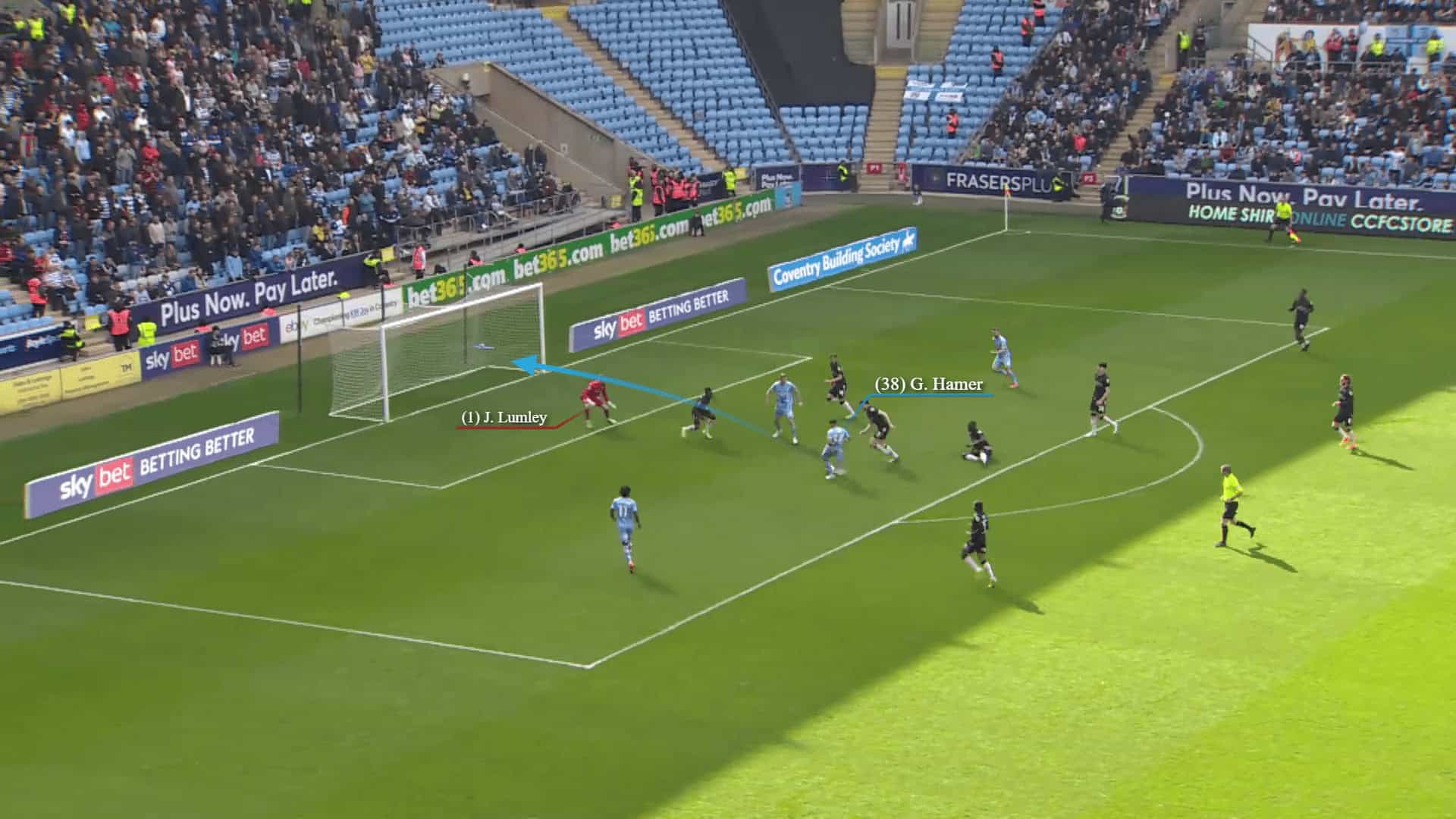
Sky Blues’ transitions
Coventry’s defensive structure primarily consists of a 5-3-2 or a 5-4-1. As their defensive territory in the below graphic highlights, they often maintain a mid-block, blocking the depth where their defensive actions occur and looking for triggers to press high.
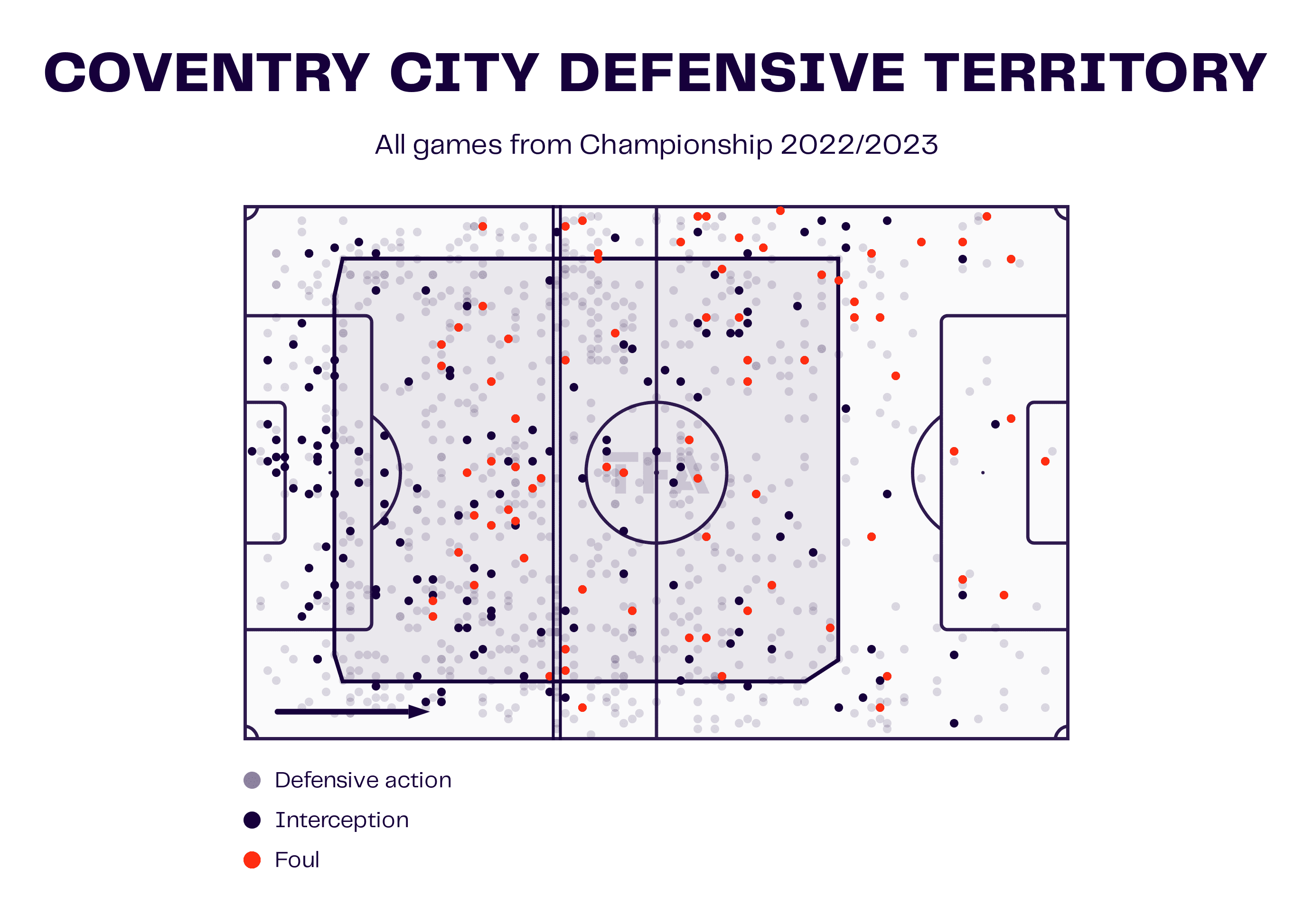
In terms of high-pressure regains, Coventry has recorded 382, which is slightly lower than Burnley’s 476. However, Coventry’s numbers are comparable to Burnley’s in terms of counter-pressing recoveries (681 vs. 666) and dangerous recoveries (151 vs. 150).
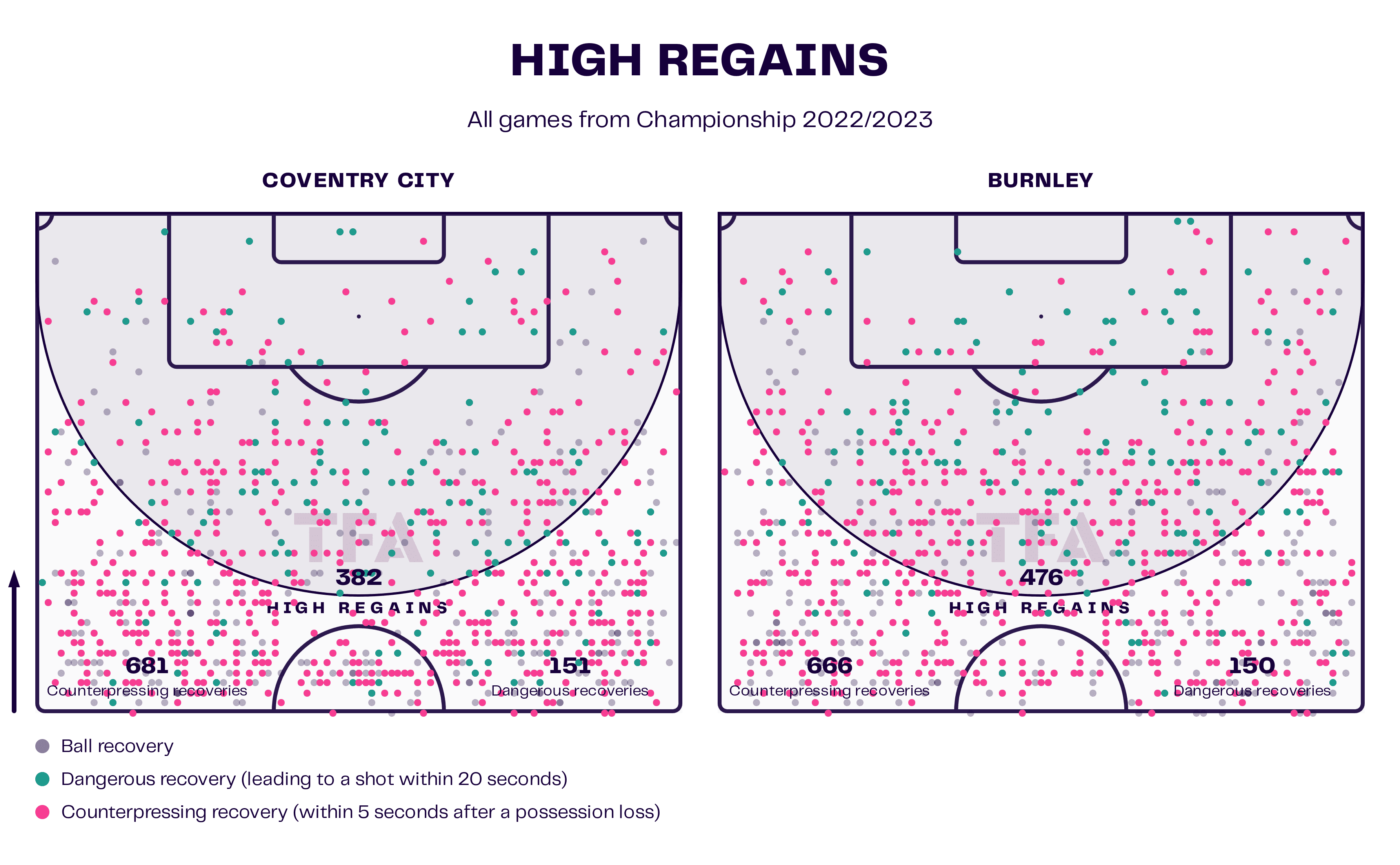
When Coventry gains possession, they quickly initiate transitions, and they employ various out-to-in movements to surprise opposing defensive lines.
In their match against QPR, they had numerical superiority and won back the ball.
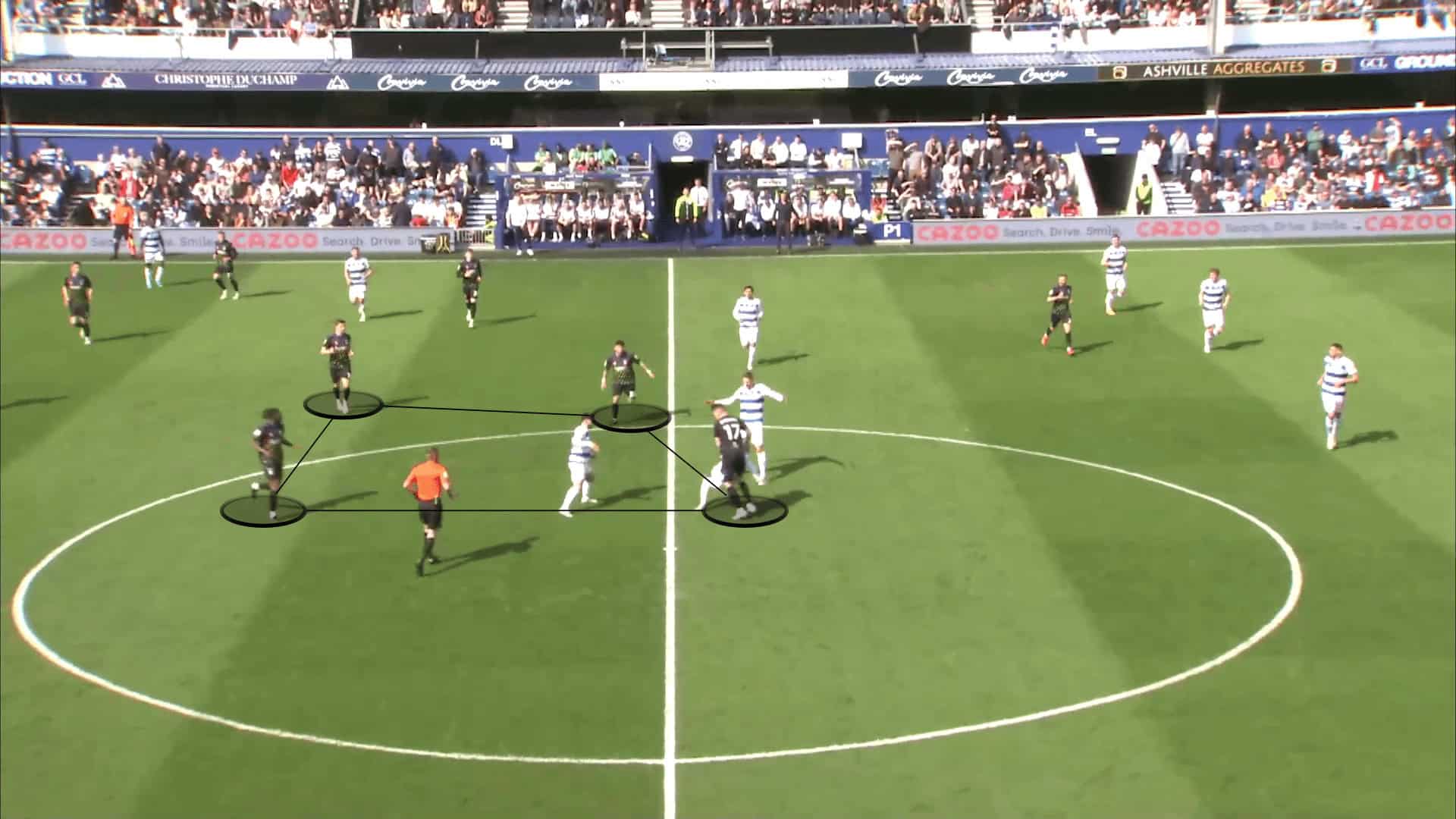
Godden began to pull the defender out while Gyökeres attacked in-to-out to open his body to receive.
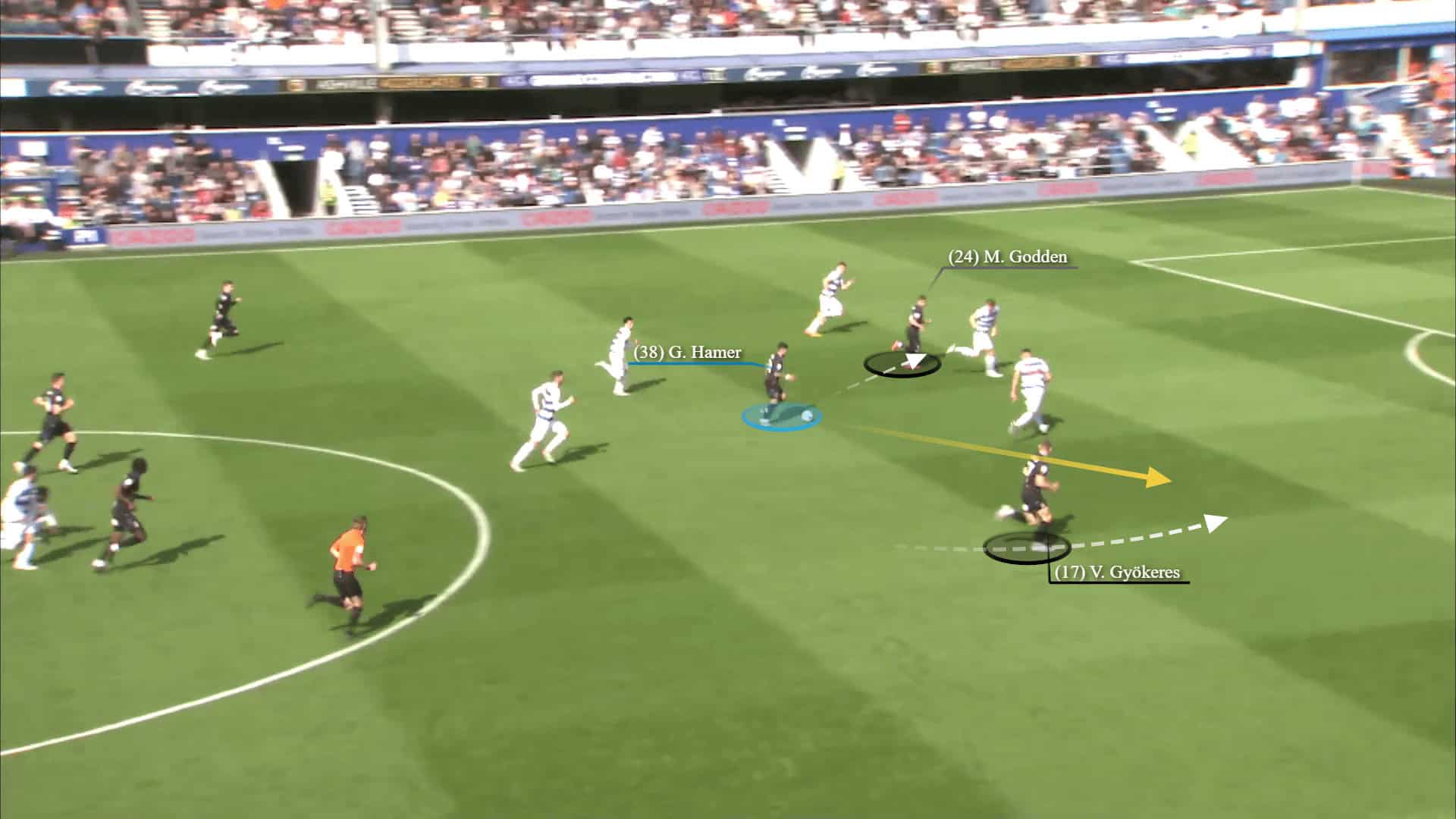
The latter was found by Hamer, and then Gyökeres singled himself and scored brilliantly.
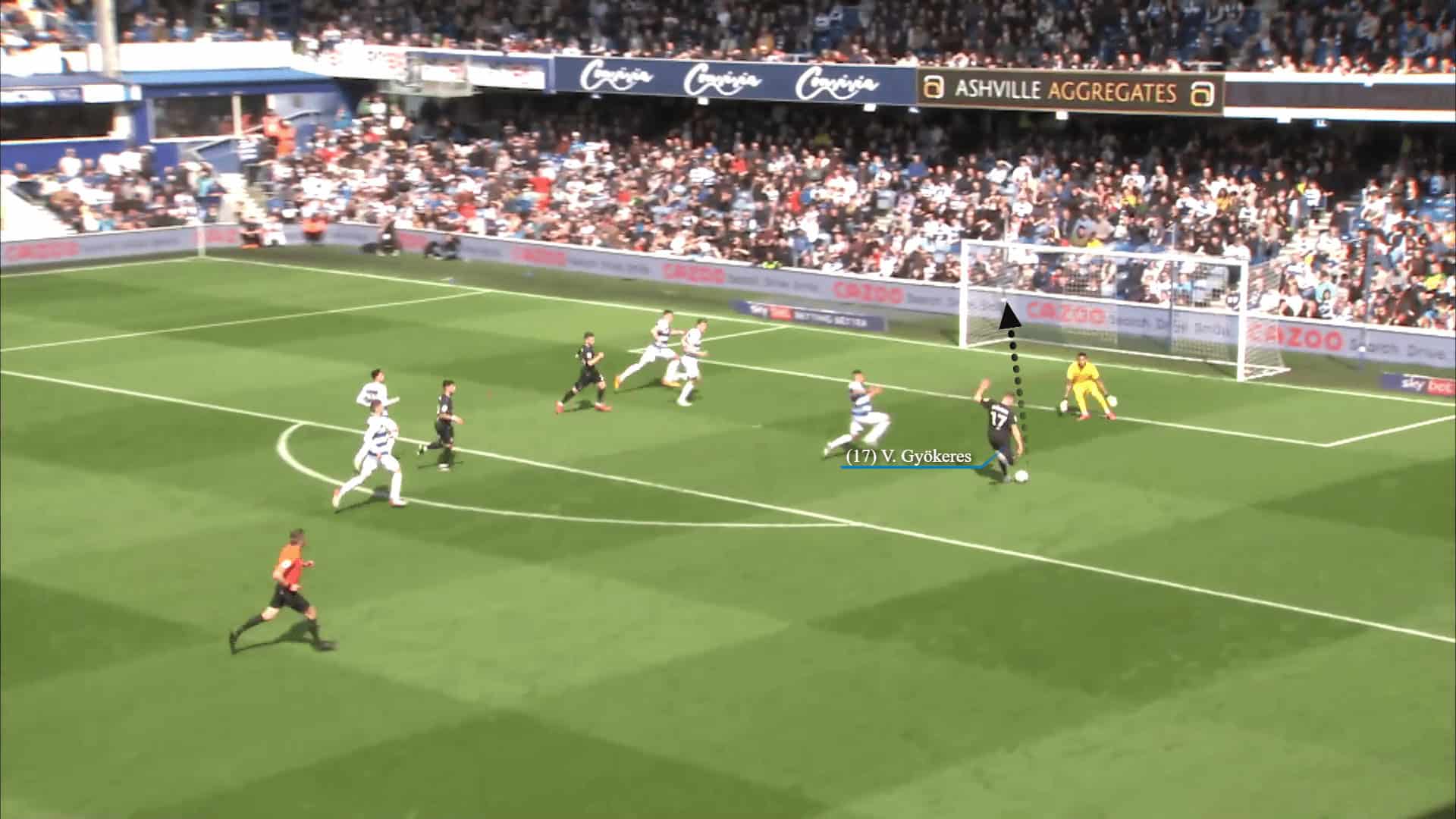
As the graphic below shows, they scored 46 goals this season with 55.65 xG from 494 shots.

Luton Town
Luton Town embody the essence of classic English football and generally lack positional rotations, being much closer to traditional English football compared to Coventry City in terms of style. This is clearly evident in their heavy reliance on long balls which is fully evident in the pass map of their goalkeeper Horvath who usually targets both half-spaces.

Welshman Rob Edwards also favours formations with three defenders at the back. 41% of the time, he has used a 3-5-2 formation and has deployed a 3-4-1-2 in 32% of their games, while only opting for a 5-3-2 formation 7% of the time. This gives them more defensive solidity with three or five centre-backs in the backline.
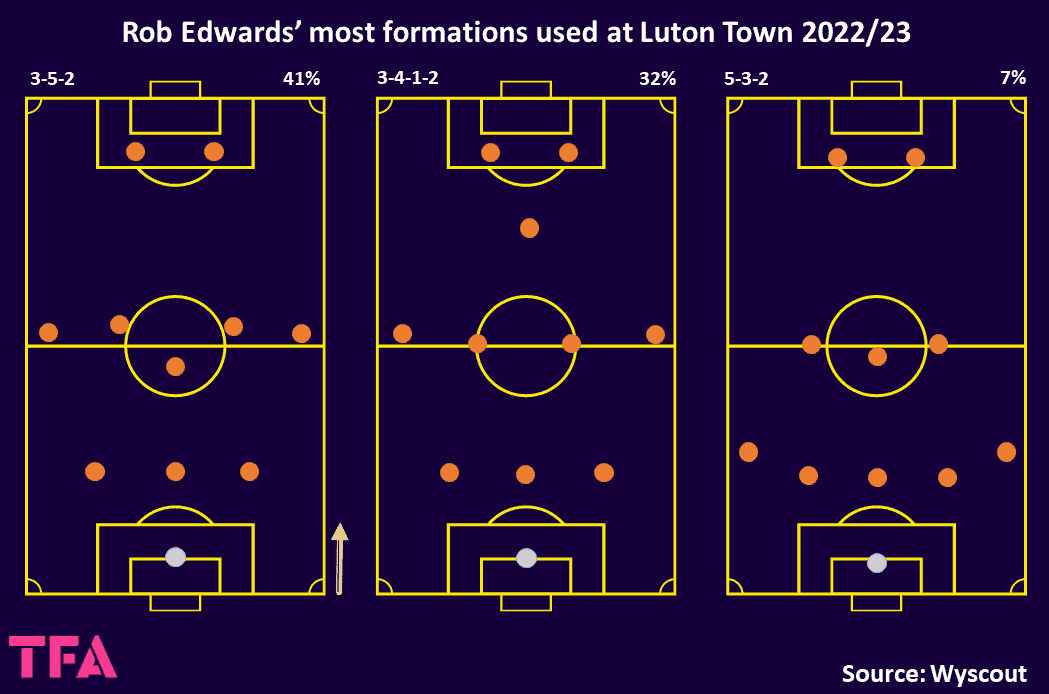
Their style of play is strongly focused on the use of both wings, while the reverse players overload and attack the box, ready for the crosses. Their attacking focus is distributed as follows: 38% on the left side, 23% through the middle, and 39% on the right side.
Doughty is also considered an important player from the flank of the field, as the graphic below shows the importance of his crosses to the box for the team and their style of play.
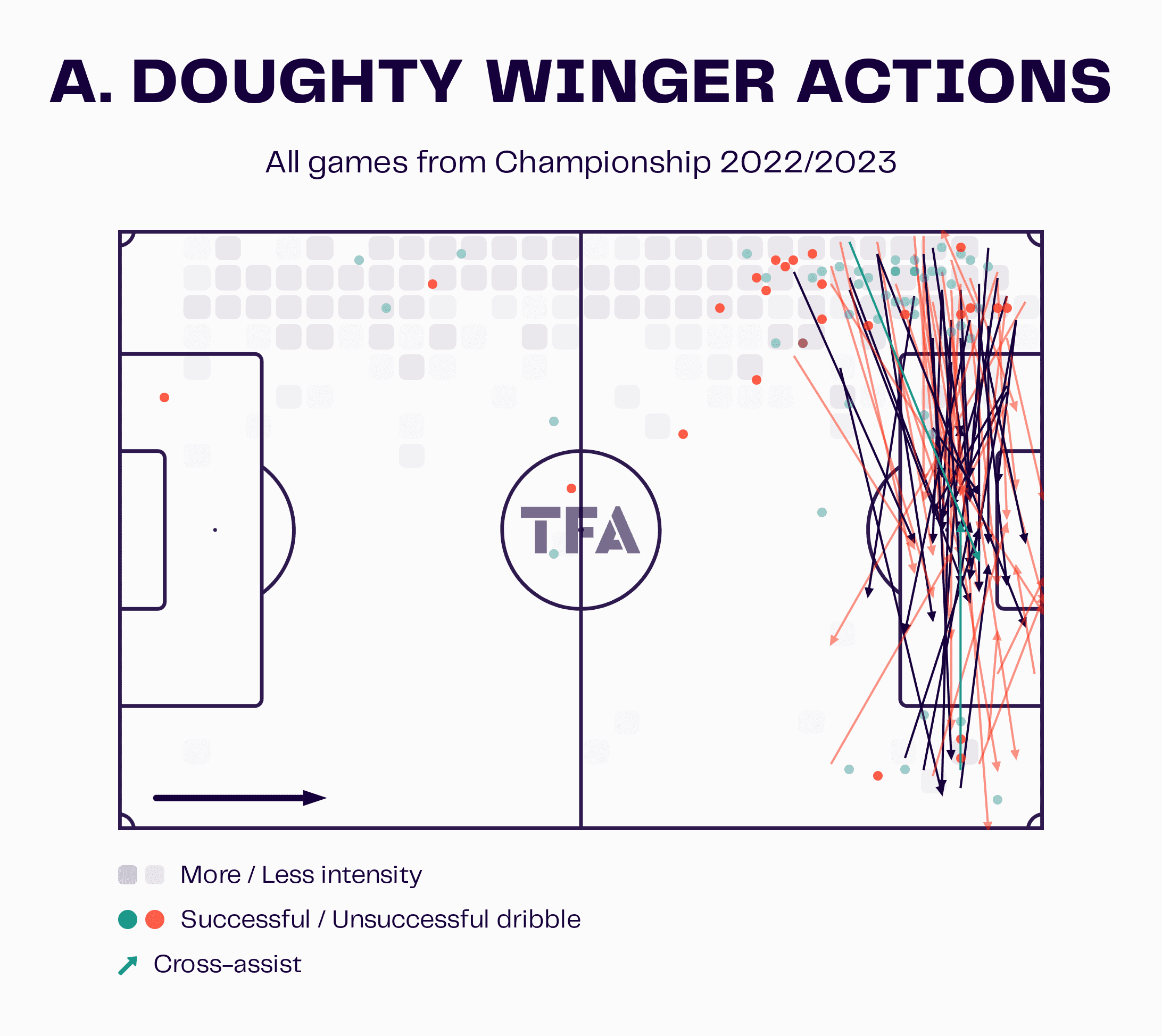
During the match against Blackpool, when Doughty received the ball on the left side, instead of cutting inside, he made a decisive vertical run, while the opposing attackers overloaded the penalty area waiting for the cross.
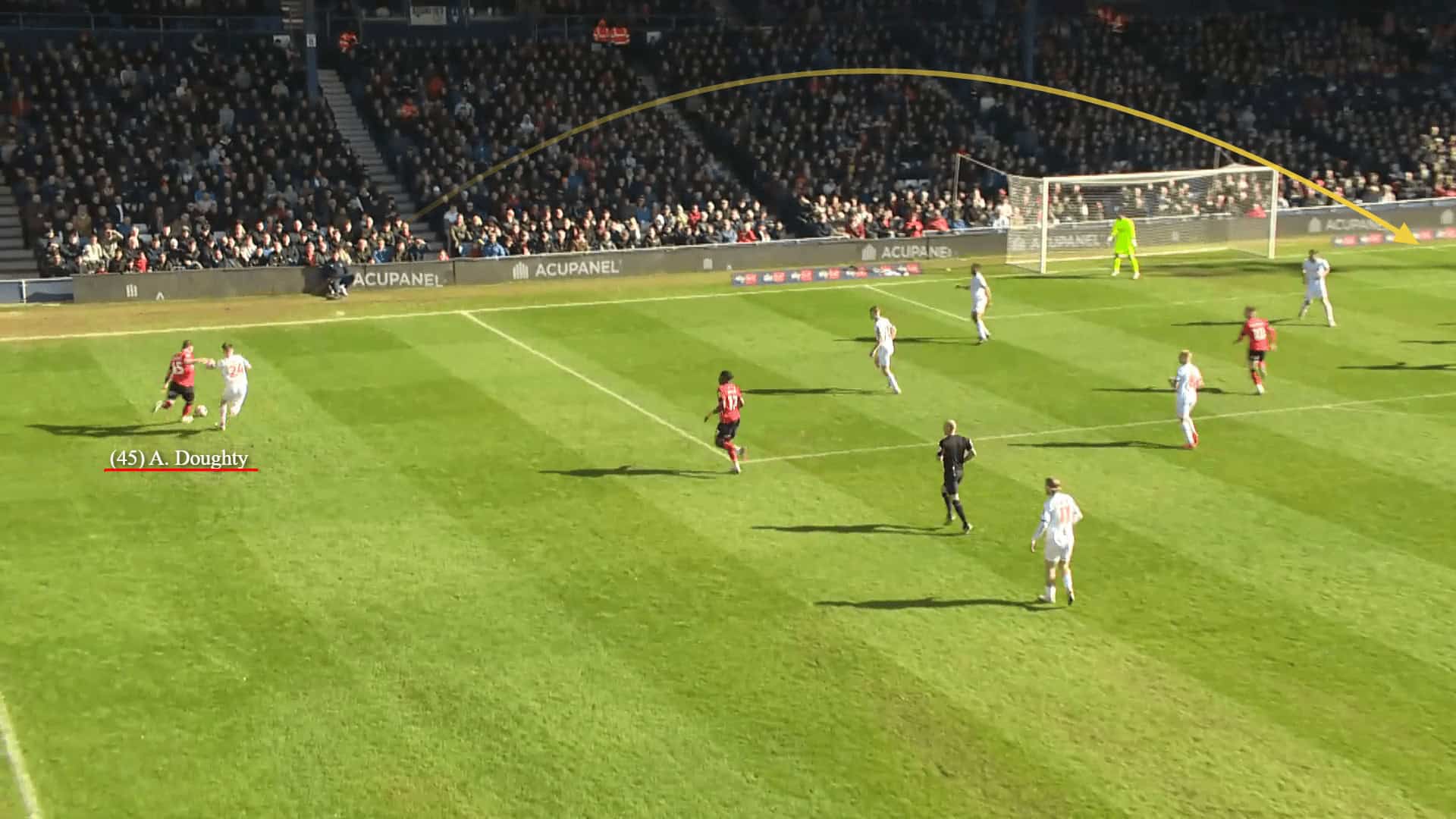
Amidst this chaotic situation, Carlton Morris, who has been their top scorer this season with an impressive tally of 20 goals, seized the opportunity when the ball deflected off a defender and fell conveniently in front of him, allowing him to swiftly find the back of the net and add another goal in a 3-1 win.
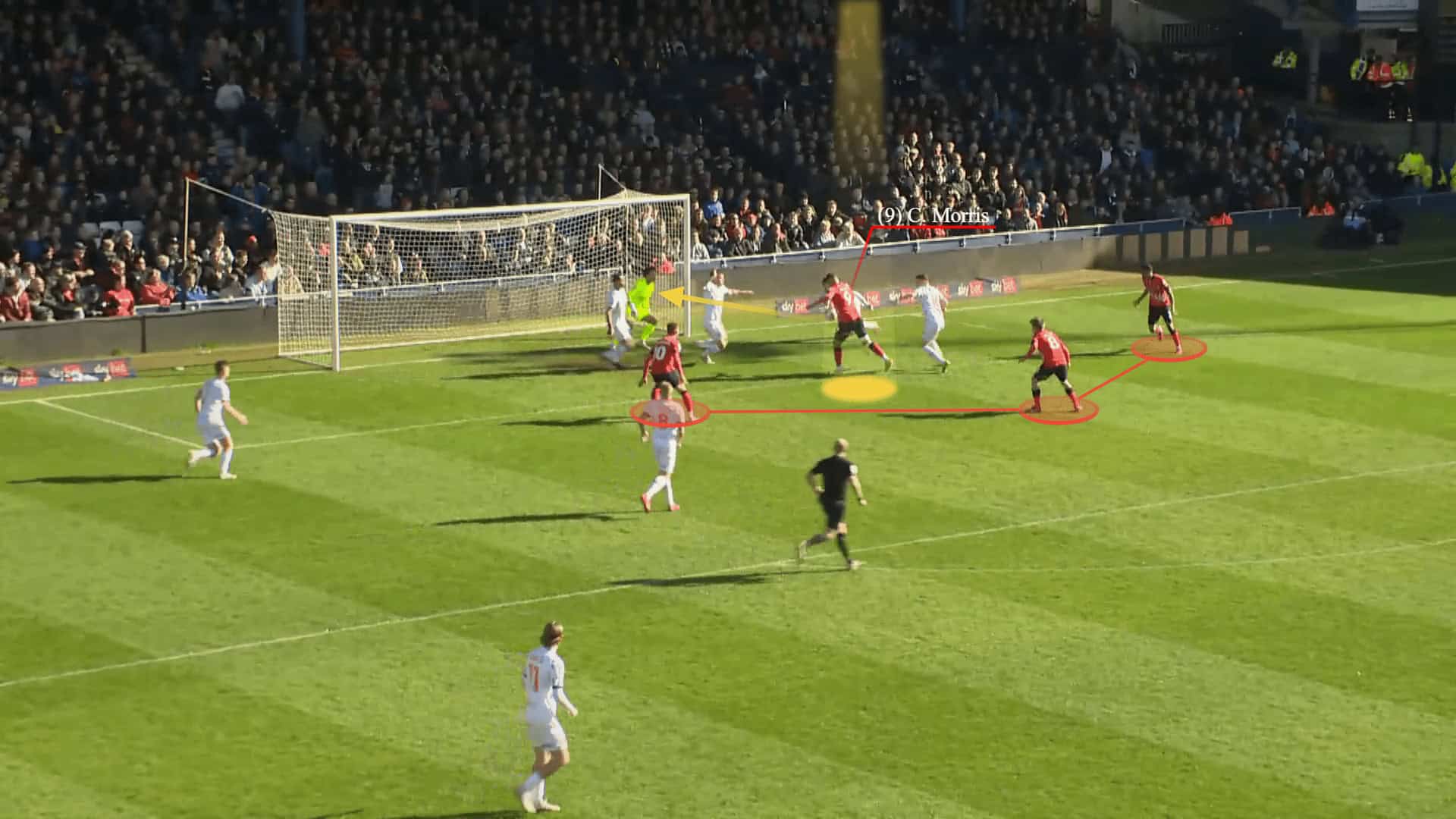
Moreover, it is worth noting that Luton Town has established a strong reliance on set pieces as a key avenue for scoring goals. A remarkable 27% of their total goals, amounting to 16 out of 56 goals, have originated from set pieces. This statistic underscores the team’s proficiency in capitalising on dead-ball situations and highlights their strategic approach to maximising scoring opportunities.
Notably, they advanced to the final by scoring two goals from set pieces against Sunderland.
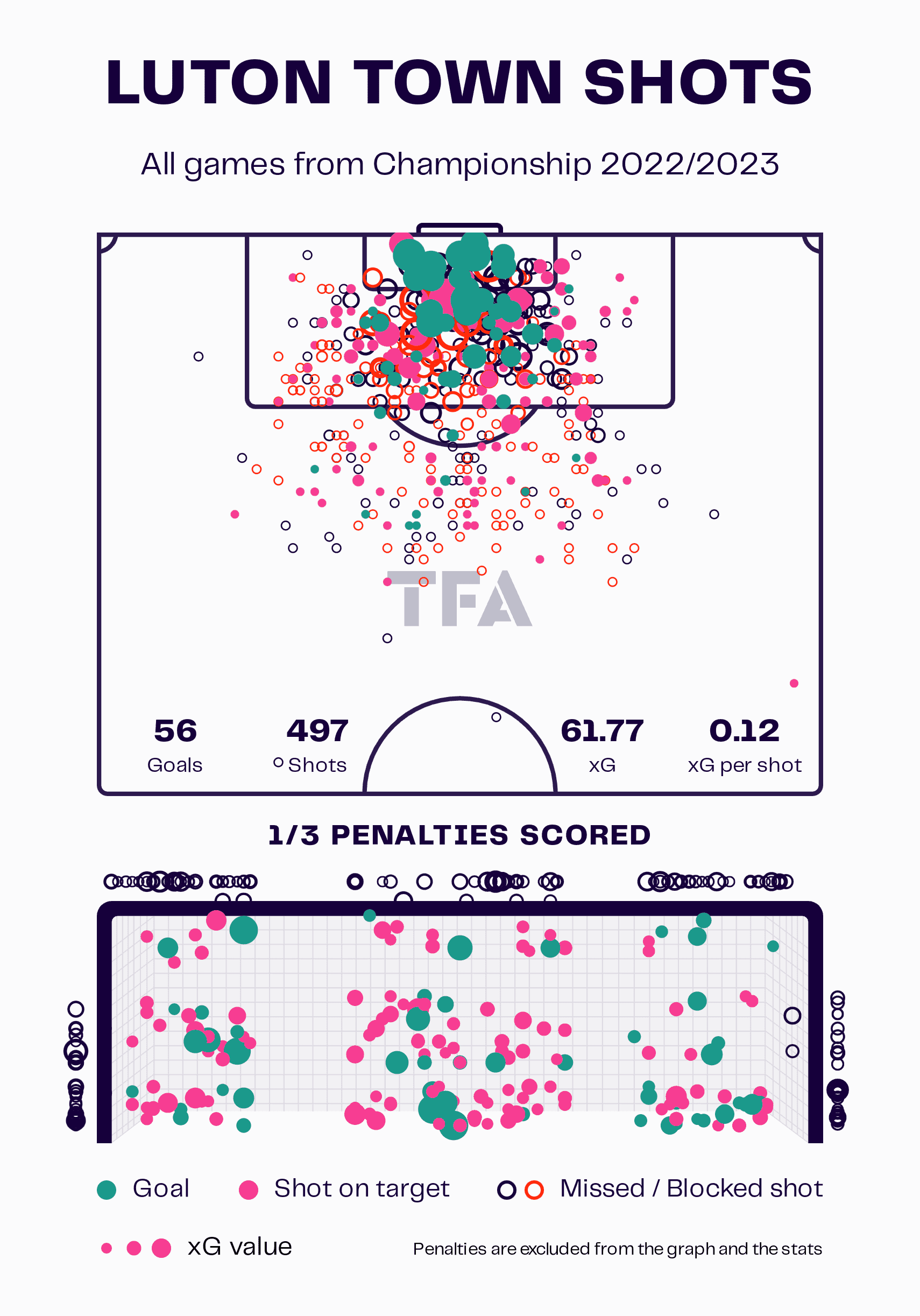
Nakamba and Clark have emerged as pivotal figures within Luton Town’s defensive structure, with their primary focus centred on safeguarding the midfield.
Nakamba has proven to be a formidable presence in midfield, showcasing his tenacity and defensive prowess through a combination of tackles and interceptions. His total of 80 tackles and interceptions combined exemplifies his ability to disrupt opposition attacks, regain possession, and provide a vital shield in front of the defence.
Meanwhile, Clark has displayed remarkable defensive aptitude, exemplified by his impressive tally of 99 tackles and interceptions. His astute positioning and anticipation allows him to break up opposing plays effectively and initiate counterattacks for his team.
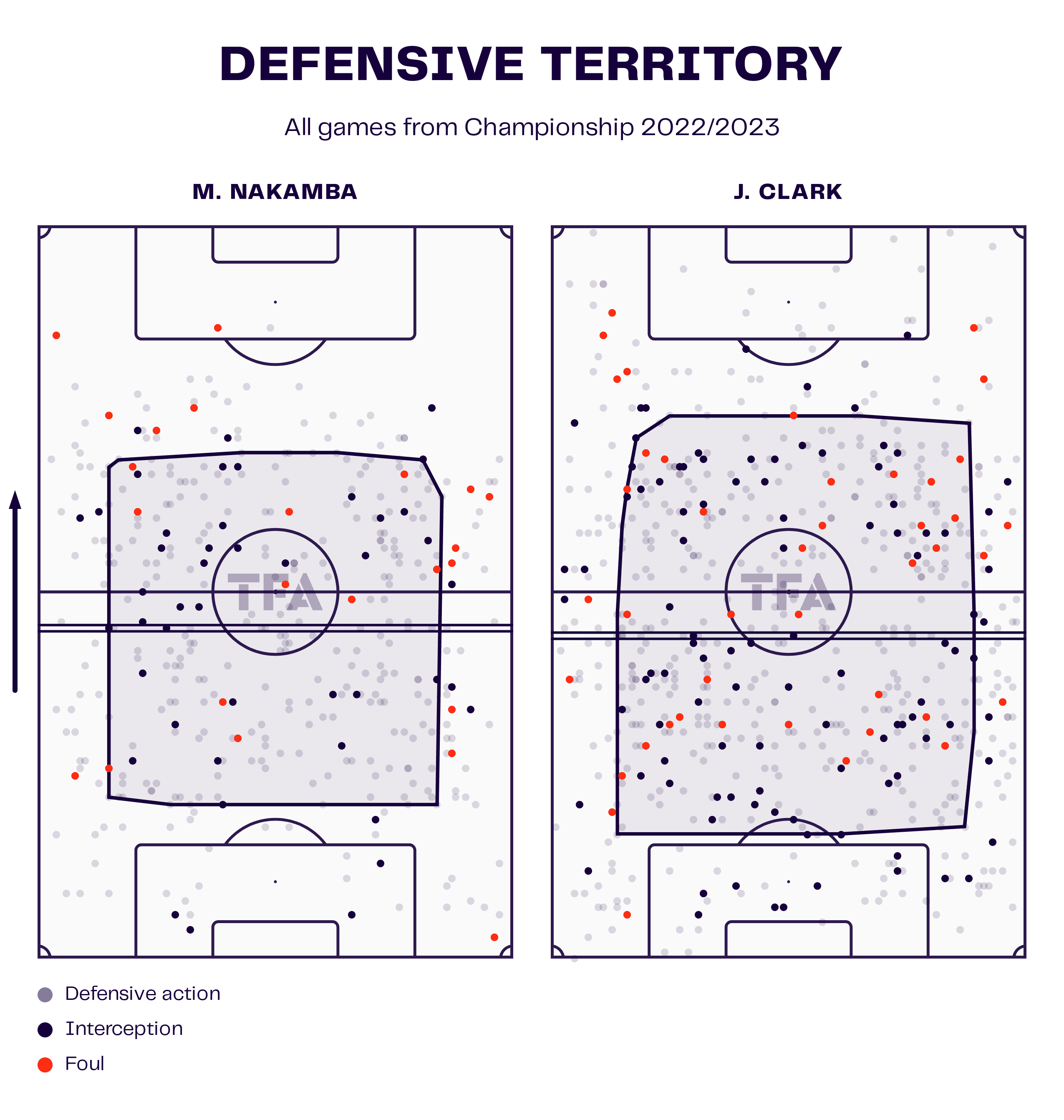
Luton Town excels in applying relentless pressure on their opponents. Their proactive approach to pressing has been instrumental in disrupting the opposition’s rhythm and creating turnovers. Notably, Luton Town has executed an impressive 451 high-pressing actions, showcasing their commitment to pressing aggressively and denying their adversaries time and space to build their attacks.
Luton Town’s dedication to counter-pressing, which involves immediately regaining possession after losing the ball, has yielded fruitful results. Their collective efforts have led to an impressive total of 735 counter-pressing returns, demonstrating their ability to quickly transition and maintain sustained pressure on their opponents.
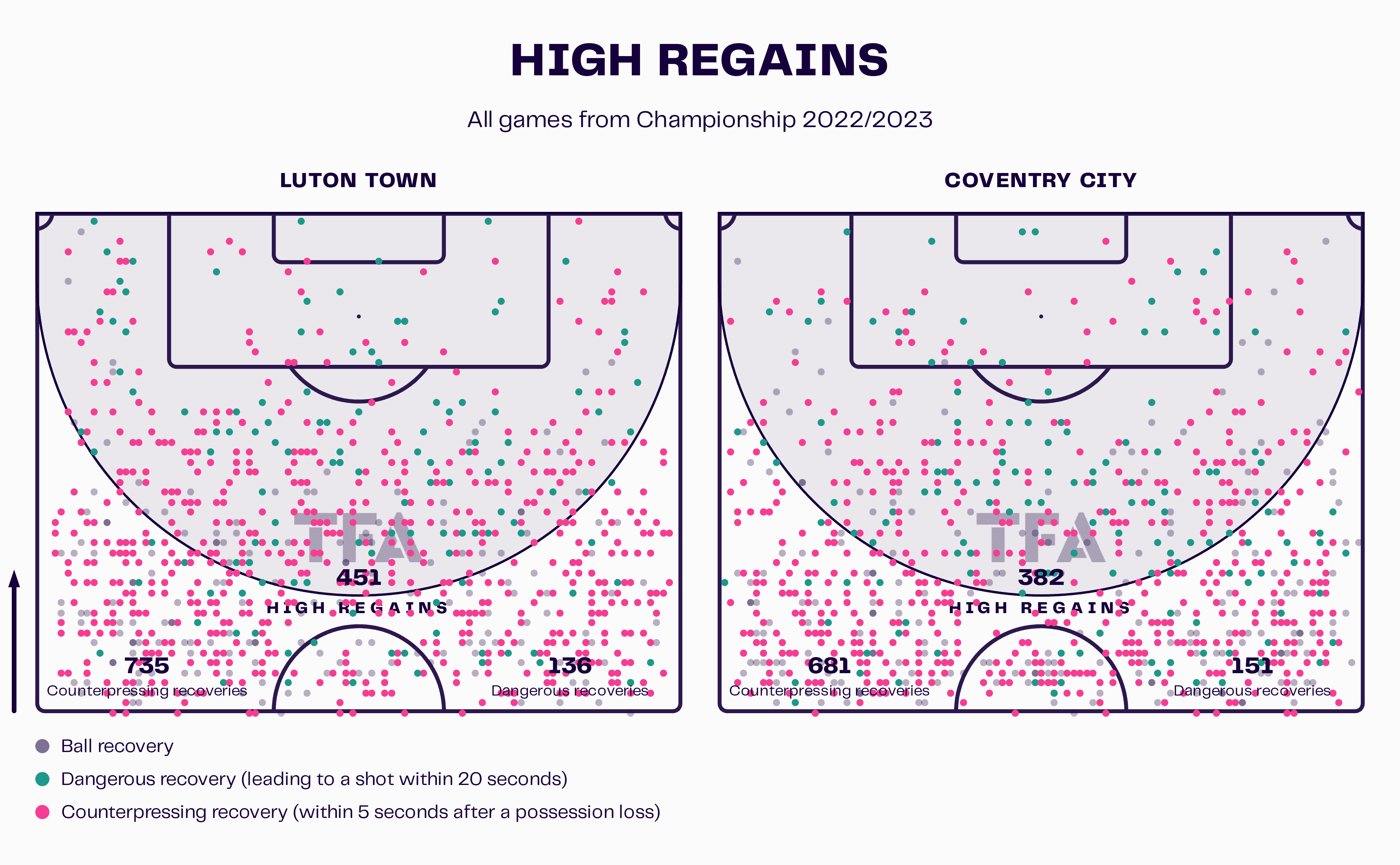
Conclusion
This upcoming match between these two dynamic teams promises to be exciting, showcasing their shared commitment and determination throughout their challenging journies.
Reaching the Premier League and competing against football giants like Manchester City and Liverpool would be an exceptional accomplishment for any qualified team. It represents a remarkable milestone in their journey, signifying their ascent to the highest level.
On the other hand, the other team will still earn the respect and recognition of fans and peers alike.





Comments